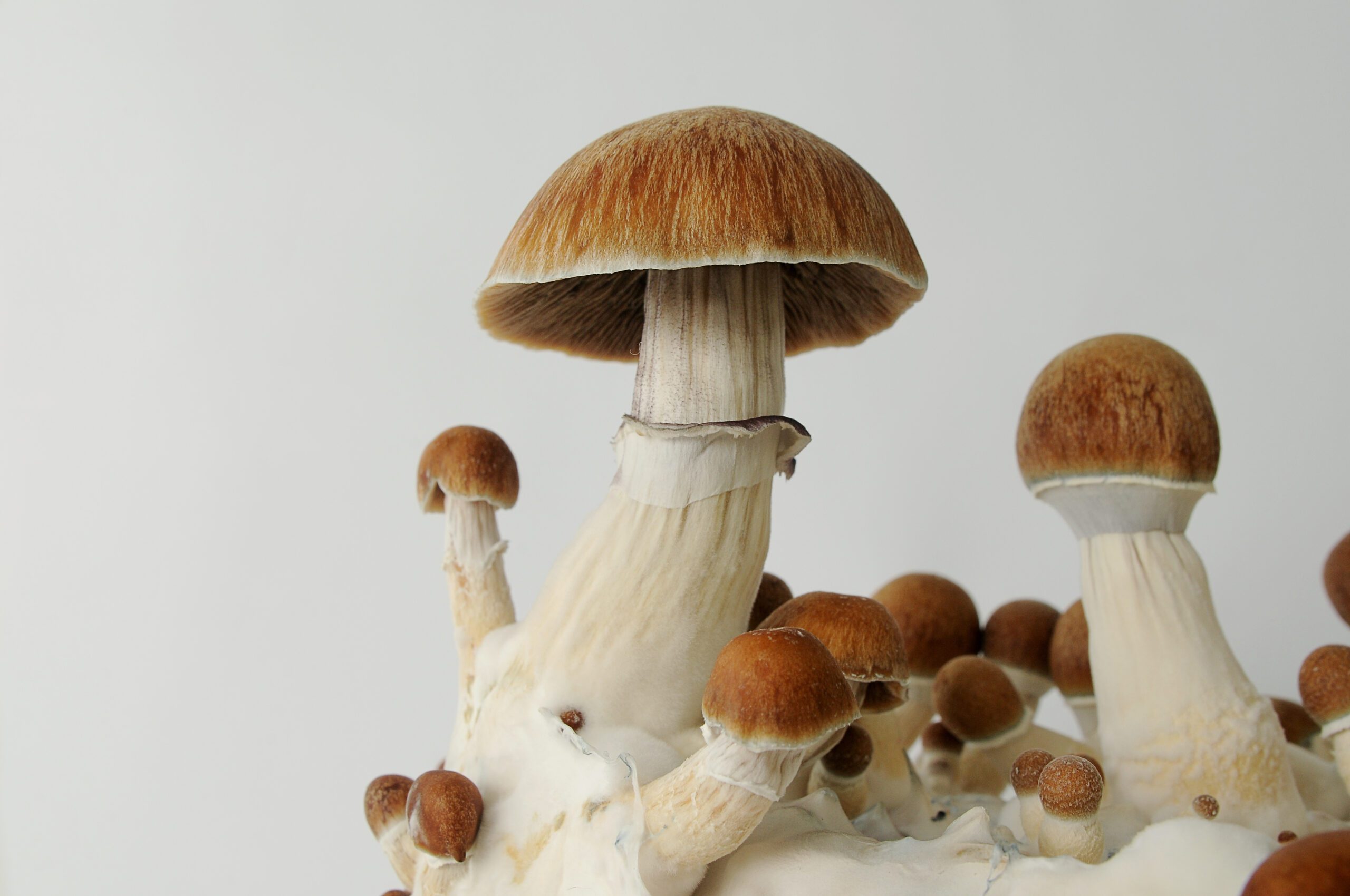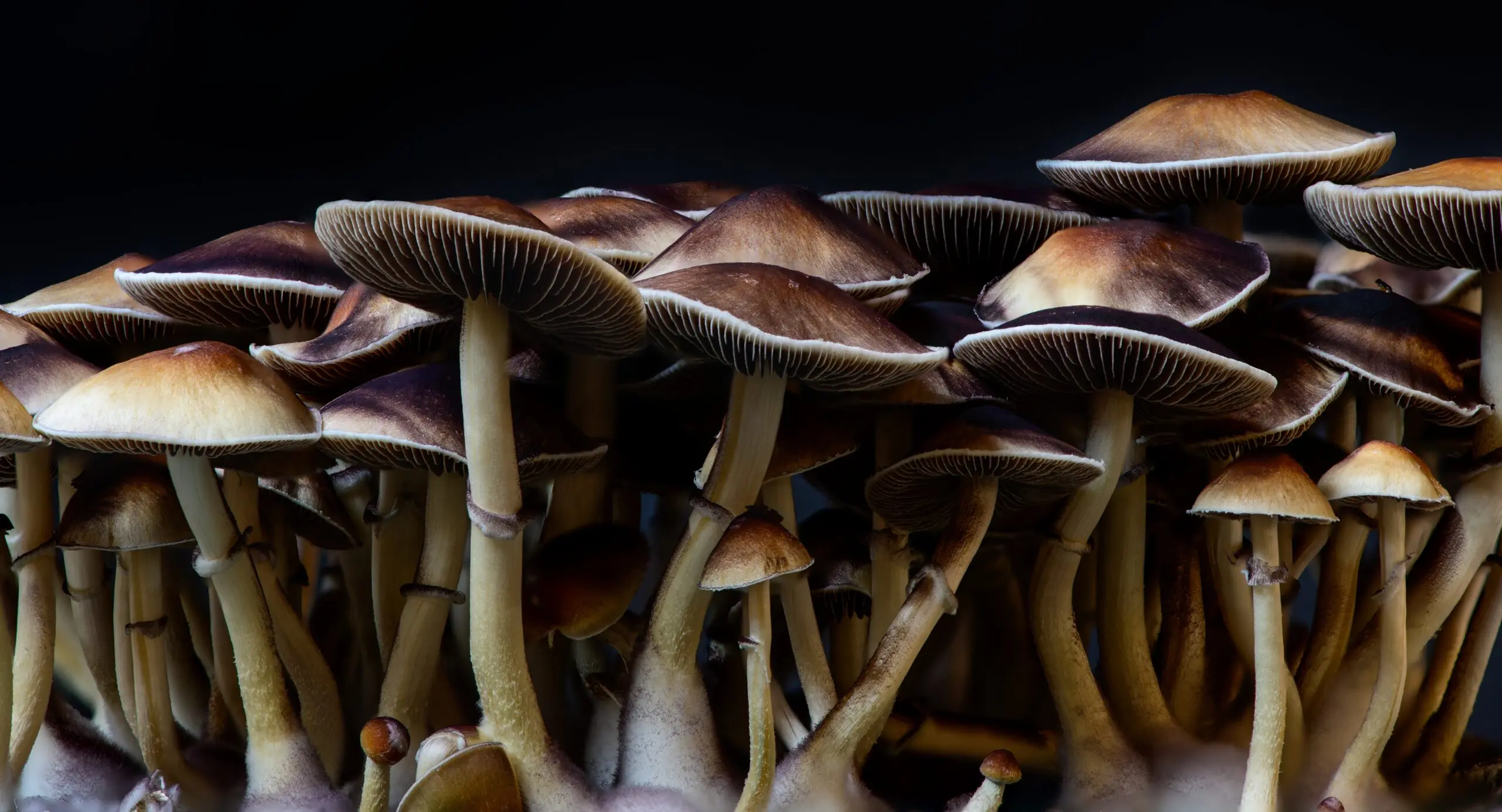
Comparative Analysis of Psilocybin and DMT
As scientific research into psychedelic substances continues to grow, so too does our understanding of their potential impacts and benefits. Among these substances, psilocybin, commonly found in psychedelic mushrooms, and DMT (Dimethyltryptamine), a powerful hallucinogenic compound, have garnered significant interest from the research community.
Let’s delve into the differences and similarities between psilocybin and DMT, focusing on their chemical structures, brain interactions, uses for wellbeing, and more, with an emphasis on the approach taken by Beckley Retreats in offering psychedelic experiences.
Mushrooms vs DMT: What is the Difference?
At first glance, the primary difference between DMT and psilocybin might seem to lie merely in their natural sources. DMT is found in various plant species and is also synthetically producible, while psilocybin is most commonly ingested through certain species of mushrooms. However, the distinctions run deeper, affecting everything from their chemical structures to their applications for self-reflection and the nature of the experiences they induce.
Understanding Mushrooms and DMT
DMT is a naturally occurring psychedelic compound. It is renowned for its rapid onset and intense psychedelic experiences, often described as transformative or transcendent. These experiences are usually short-lived, typically lasting about 10-30 minutes when smoked.
Psilocybin, on the other hand, is a prodrug, meaning it’s converted by the body into psilocin, which then exerts psychoactive effects. The experiences induced by psilocybin are often longer, generally lasting between 4 to 8 hours. These trips are also described as less intense than DMT, providing a more introspective and less overwhelming experience.
Chemical Structure and Brain Interaction: DMT vs Psilocybin
Chemically, both DMT and psilocybin are similar to the neurotransmitter serotonin and interact with serotonin receptors in the brain, particularly the 5-HT2A receptor, which plays a key role in regulating mood, anxiety, and cognition. That said, the way in which DMT and psilocybin interact with these receptors and the subsequent effects on the brain and consciousness differ significantly.
DMT causes a rapid, sometimes overwhelming flood of visual and emotional sensations, often accompanied by intense hallucinations and a feeling of being transported to a different dimension or reality. Its effects come on quickly and dissipate rapidly, mainly due to the body’s efficient metabolism of the compound.
Psilocybin’s effects are more gradual, providing an experience that many users describe as a profound inner exploration of their thoughts and feelings, with visual effects that are less intense and more intertwined with emotional and introspective experiences.
Uses for Wellbeing: DMT vs Psilocybin for Depression
Recent studies have shown potential for the transformative use of both DMT and psilocybin, particularly for conditions like depression. Considering DMT vs psilocybin for depression highlights an interesting area of research, with both showing potential in providing rapid and sustained relief from depressive symptoms.
Psilocybin has been the focus of several clinical trials, with results suggesting that it can produce reductions in symptoms we often connect to depression and anxiety. Its ability to foster a deep, introspective experience is thought to be key in its potential effectiveness, allowing users to confront and reframe their thoughts and feelings about themselves and the world around them.[1]
DMT, while less studied in the context of depression, has shown promise in early research for its fast-acting effects, which could potentially offer immediate relief from acute episodes of depression.[2] However, given the intensity of DMT experiences, this may not be suitable for all patients, highlighting the importance of careful patient selection and professional guidance in settings geared toward wellbeing.
4-AcO-DMT vs Psilocybin: A Closer Look
Another compound of interest is 4-AcO-DMT, often considered a synthetic analog of psilocybin. The 4-AcO-DMT vs psilocybin comparison is fascinating due to their similarities in effects and pharmacology. Both are prodrugs of psilocin, meaning they are converted into psilocin in the body, which then produces the psychoactive effects.
The debate between 4-AcO-DMT vs psilocybin largely revolves around the nuances of their experiences and their potential applications for self-assessment. Some users report that 4-AcO-DMT offers a more controlled and less variable psychedelic experience than psilocybin, potentially making it more suitable for transformative use. However, more research is needed to fully understand the differences and potential advantages of one over the other.
How Beckley Retreats Uses Psilocybin
Beckley Retreats represents the forefront of integrating psychedelic retreats into wellbeing and self-reflection experiences. Utilizing psilocybin, Beckley Retreats offers guided sessions in a controlled, supportive environment, allowing individuals to explore their inner selves.
The use of psilocybin at Beckley Retreats is grounded in bridging science-backed research with holistic approaches, combining the psychedelic experience with preparatory and integrative sessions that help maximize the potential benefits. This method fosters profound personal insights and emotional breakthroughs, aiding in long-term development and personal growth.
The comparative analysis of mushrooms vs DMT unveils a complex landscape of psychedelic research and wellbeing. While both compounds offer significant potential for self-reflection, particularly in treating depression, differences in experience, duration, and interaction with the brain suggest varied applications and considerations for their use. As research continues to evolve, the nuanced understanding of these substances will undoubtedly contribute to more effective and personalized approaches.
Sources:


